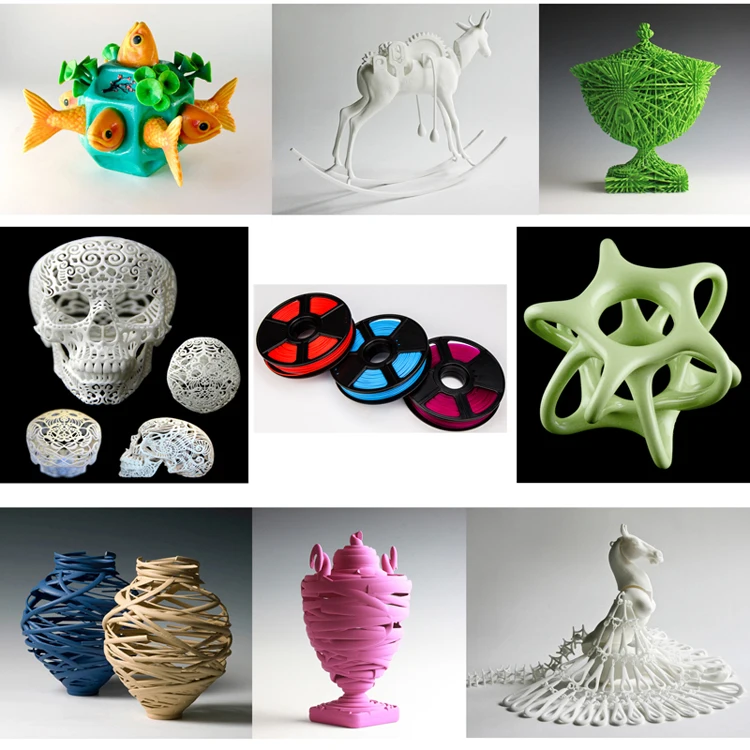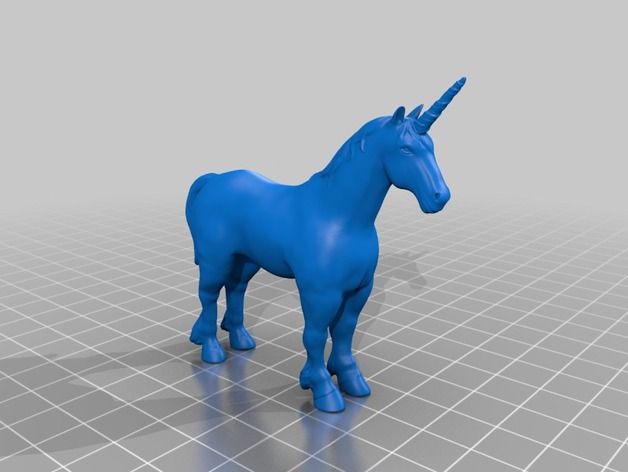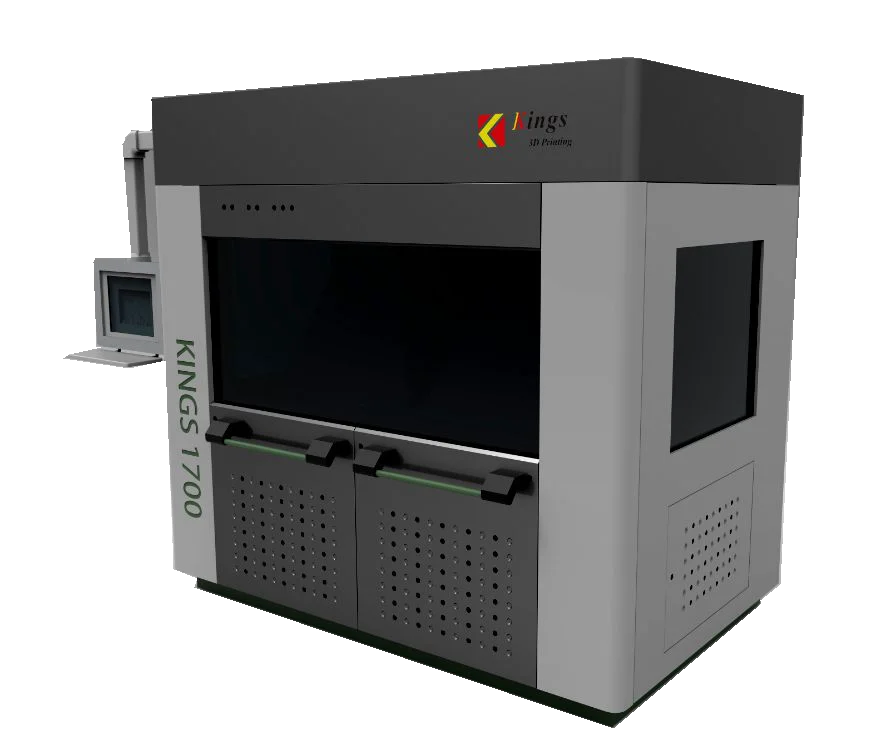3D printer world
3D Printing World
3D Printing World
Muldex
REPRAP IDEX 3D Printer
STORE
-
Mini M3 Heat Set Thread Inserts
Mini M3 Heat Set Thread Inserts
- Regular price
- $11.99
- Sale price
- $11.99
- Regular price
-
- Unit price
- /per
Sale Sold out
-
Muldex Frame Kit
Muldex Frame Kit
- Regular price
- $195.00
- Sale price
- $195.00
- Regular price
-
- Unit price
- /per
Sale Sold out
-
Powder Coated PEI Flex Plate
Powder Coated PEI Flex Plate
- Regular price
- $59.
99
- Sale price
- $59.99
- Regular price
-
- Unit price
- /per
Sale Sold out
-
Ultimate Muldex Kit
Ultimate Muldex Kit
- Regular price
- $729.99
- Sale price
- $729.99
- Regular price
-
- Unit price
- /per
Sale Sold out
-
Fastener Kit
Fastener Kit
- Regular price
- $42.00
- Sale price
- $42.
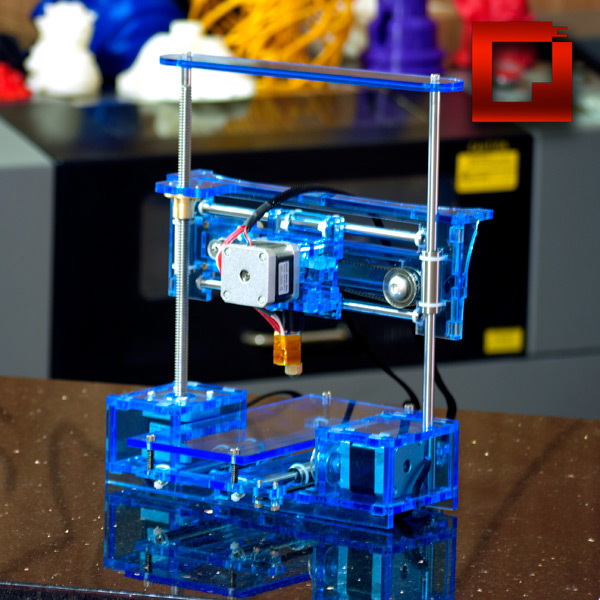 00
00 - Regular price
-
- Unit price
- /per
Sale Sold out
-
Muldex Rail Kit
Muldex Rail Kit
- Regular price
- $150.00
- Sale price
- $150.00
- Regular price
-
- Unit price
- /per
Sale Sold out
-
Mulbot Sticker
Mulbot Sticker
- Regular price
- $2.00
- Sale price
- $2.00
- Regular price
-
- Unit price
- /per
Sale Sold out
-
Muldex Motor Kit
Muldex Motor Kit
- Regular price
- $215.
 00
00 - Sale price
- $215.00
- Regular price
-
- Unit price
- /per
Sale Sold out
Use left/right arrows to navigate the slideshow or swipe left/right if using a mobile device
3D Printer for Sale | Buy 3D Printer Kits
3D printing is a brand new revolutionary technology that has been dubbed the next big thing. It is a growing innovation and is rapidly proving to be a very exciting and efficient form of technology that produces three-dimensional models and prototypes of virtually any shape and size from 3D CAD files using raw materials such as different types of plastic, wood, metals, ceramic and so on. It has found wide use in modern manufacturing industries, like automotive, dental, aerospace, etc, in educational institutions as a tool to combine theory and practice in classrooms, test theories, and build models, and last but not least at homes, combining learning, creativity, and fun for the whole family. All those vary in size, shape, materials, and methods used, and of course price. For example, the home use models are on average more safe, quiet in operation, and compact, basically a budget 3D printer. On the other hand, professional manufacturing industrial grid 3D printers are bigger, more sophisticated, and of course, are in the upper price range. Here you will find machines for home, as well as educational and professional ones, that will be a perfect fit for your specific needs, as we have some of the most helpful and easy to use 3D printer kits UK market has to offer.
All those vary in size, shape, materials, and methods used, and of course price. For example, the home use models are on average more safe, quiet in operation, and compact, basically a budget 3D printer. On the other hand, professional manufacturing industrial grid 3D printers are bigger, more sophisticated, and of course, are in the upper price range. Here you will find machines for home, as well as educational and professional ones, that will be a perfect fit for your specific needs, as we have some of the most helpful and easy to use 3D printer kits UK market has to offer.
So what is 3D printing and how did this amazing technology start? The birth of this technology was released a decade ago, as a process known as stereolithography. Its components operate simultaneously using a layering technique where an object is constructed in sequence layers until it’s complete. The beauty of this technology is that it performs admirably with even the most complex shapes and parts, many of which cannot be produced using conventional printing methods. The creation of 3D printed objects is performed with additive manufacturing, a manufacturing process that constructs materials through successive material layers sliced piece by piece and built from the bottom-up to form the desired object.
The creation of 3D printed objects is performed with additive manufacturing, a manufacturing process that constructs materials through successive material layers sliced piece by piece and built from the bottom-up to form the desired object.
Additive manufacturing offers significant printing benefits to conventional processes. For one, there are fewer steps between the CAD model and production promoting better efficiency, the manufacturing process is developed at a rapid speed for even the most complex shapes and sizes and materials are less prone to go to waste, all at a cheaper cost. With the benefits of 3D printing, there is no room for getting production wrong, but even the best 3D printer UK has to offer, allows you to reconstruct damaged sections of existing materials. Additive manufacturing continues to develop a more streamlined, efficient production processing which allows for the best printouts without effort. The extensive range of the best 3D printers that we have available, deliver outstanding and innovative high-quality printing performance.
Most 3D printer models that you can find on our website are affordable with efficient characteristics that can develop excellent designs from the simplest to the most complex material structures, with an impeccable design using different kinds of printing processes to provide an exquisite printing experience.
The best 3D printers for sale at at our webstore are presented with the following objectives in mind:
- Efficient Production at Lower Prices
The speed of production compared to traditional methods is second to none. Our machines deliver complex models in a relatively short time with their diverse range of features and functions. They are not designed just for the complex, advanced individuals, but are rather simple in use. We strive to cater to your needs and intricately deliver that model you’re looking for with the use of the simplest to most complex materials. Customers are also able to experience the convenience of cloud-based 3D printer models, as many of them sold through our website support that function.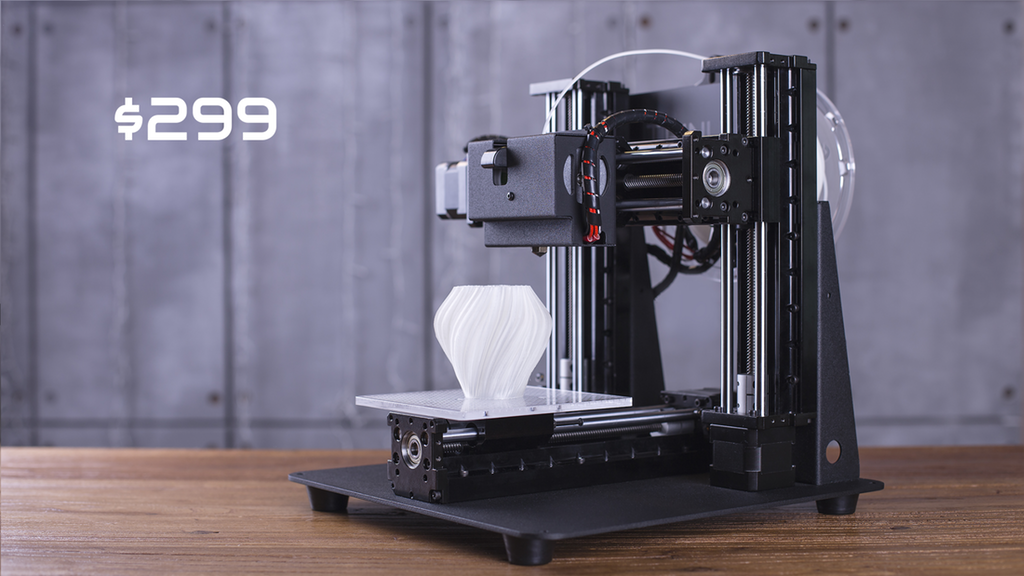 The efficiency of production also lowers inventory costs and therefore reduces labour time. Some of our best 3D printers have the Wi-Fi connectivity feature, ideal for the modern office or within a home environment as the best 3D printer for beginners. When it comes to lowering the 3D printing costs and raising the printing efficiency – our printers won’t leave you disappointed. Look through our catalogue to buy 3D printer you need!
The efficiency of production also lowers inventory costs and therefore reduces labour time. Some of our best 3D printers have the Wi-Fi connectivity feature, ideal for the modern office or within a home environment as the best 3D printer for beginners. When it comes to lowering the 3D printing costs and raising the printing efficiency – our printers won’t leave you disappointed. Look through our catalogue to buy 3D printer you need!
- Less Material Wastage and Sustainable Results
The reduction of waste is a key feature in today’s efficient 3D processing. Our 3D printers UK only uses materials that are necessary when layers are sequentially added one after the other which secures less wastage of raw materials. Besides, its efficiency ensures the re-production of recycled and reused materials. There has been a growing demand for recycled filament to ensure the sustainability of our best budget 3D printer UK. Significant wastage is only formed from failed prints or discarded support structures. Our best 3D printers are prolific in ensuring the efficiency of waste reduction – materials are reusable, thus perfect models are produced with less harm to the environment. We also offer a range of sophisticated products that have a filament sensor, warning you if the filament is finished or broken and stops the printing to ensure quality and less waste. Moreover, we have 3D printer models that have a resume function, which means that if you have a power outage or accidental power cut off, the printer will resume printing from the last moment, thus providing a high success rate of your printing experience. So if you need to buy 3D printer UK has to offer and at the same time looking for a 3D printer for sale, you are in the right place.
Our best 3D printers are prolific in ensuring the efficiency of waste reduction – materials are reusable, thus perfect models are produced with less harm to the environment. We also offer a range of sophisticated products that have a filament sensor, warning you if the filament is finished or broken and stops the printing to ensure quality and less waste. Moreover, we have 3D printer models that have a resume function, which means that if you have a power outage or accidental power cut off, the printer will resume printing from the last moment, thus providing a high success rate of your printing experience. So if you need to buy 3D printer UK has to offer and at the same time looking for a 3D printer for sale, you are in the right place.
- Mass Model Customisation
One of the key benefits of 3D printing is to reduce the need for expensive, dedicated tools and be specific to the materials and tools necessary for the design model needs. Printers sold at our 3D printer shop UK are built for significant waste reduction, yet use cost-effective printing components to precisely meet the requirements you are looking for.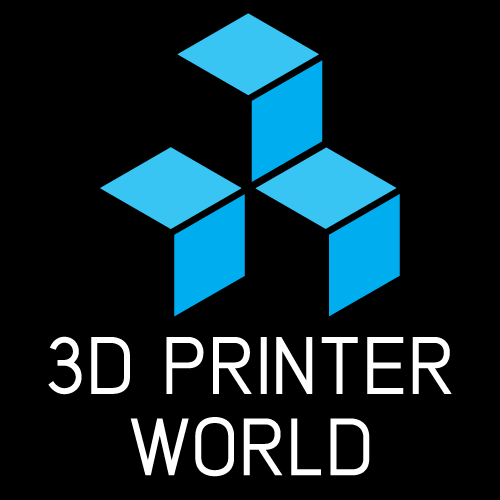 We make sure you get the best 3D printing quality without raiding your wallet too much. Expensive does not always equal high quality – our best budget 3D printers rely on rapid and efficient development at lower costs. Mass customization of 3D printer parts deliver the following elements: efficiently capture consumer data, the transformation of data into design and produce marketable cost rates. Once your requirements conclude that customisation is worth it, determine the information required for your model (dimensions, colour, text, features, etc). Establish the transformation of the data and estimate the cost for the 3D printer projects.
We make sure you get the best 3D printing quality without raiding your wallet too much. Expensive does not always equal high quality – our best budget 3D printers rely on rapid and efficient development at lower costs. Mass customization of 3D printer parts deliver the following elements: efficiently capture consumer data, the transformation of data into design and produce marketable cost rates. Once your requirements conclude that customisation is worth it, determine the information required for your model (dimensions, colour, text, features, etc). Establish the transformation of the data and estimate the cost for the 3D printer projects.
- Customer Needs Matter Most
Our shop always ensures that all of our technology is customer-friendly and safe. To secure the highest level of safety and quality that we deliver, our highly-trained team tests all the 3D printer models sold through our website. We only work with companies and brands that we trust and that passed through our in house tryouts and tests and are 3D Printer World-approved.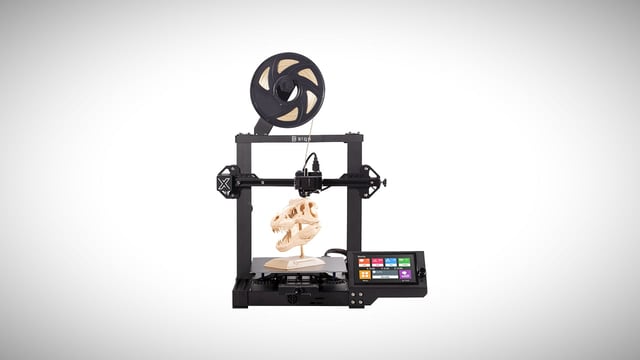 Another important factor is that all of our products are delivered with clear instruction manuals and assembly methods with your safety in mind. Being able to efficiently develop the perfect model for our customers is our objective. We want to deliver a unique user experience and our best 3D printer kit for all of our models is designed with one “fit for all” solution. Plus, the cost of 3D printer here won’t make a hole in your pocket, as we are a specialised 3D printing shop and have some of the best cheap 3D printer UK has to offer. And this is why we stays ahead of the competition.
Another important factor is that all of our products are delivered with clear instruction manuals and assembly methods with your safety in mind. Being able to efficiently develop the perfect model for our customers is our objective. We want to deliver a unique user experience and our best 3D printer kit for all of our models is designed with one “fit for all” solution. Plus, the cost of 3D printer here won’t make a hole in your pocket, as we are a specialised 3D printing shop and have some of the best cheap 3D printer UK has to offer. And this is why we stays ahead of the competition.
Here, our best budget 3d printers not only deliver efficiency but are also affordable, making your purchase worth the cost with guaranteed top-quality results. We, as a business, ensure that all of our products are regularly improved and enhanced. At our company, our competitive advantage stems from making it possible to develop the perfect prototype model every single time, due to being a specialised 3d printing store.
Our cheap printers offer high-quality, budget printing that is developed with unique features and functions that deliver exceptional versatility with simple usability and control. Our wide range of best budget 3D printer uk is easy to assemble, deliver efficient results and are equipped with cutting-edge technology to ensure exceptional printing results every time. Some of our cheap 3D printer uk comes with built-in crystal-clear printing resolution for consistent quality, dual-axis printing, temperature, and additive controls to deliver sleek contour lines, clear angles and strong structures. We have smart 3D printer models that connect to WiFi and have apps, by which they can be controlled, have filament detectors, auto-levelling, sophisticated heatbed and nozzle technology, air filtration, etc.
At our webstore, we thrive on innovation. The advantages of this technology is to make for promising technology that create a brand-new efficient way to print high-quality models compared to traditional methods.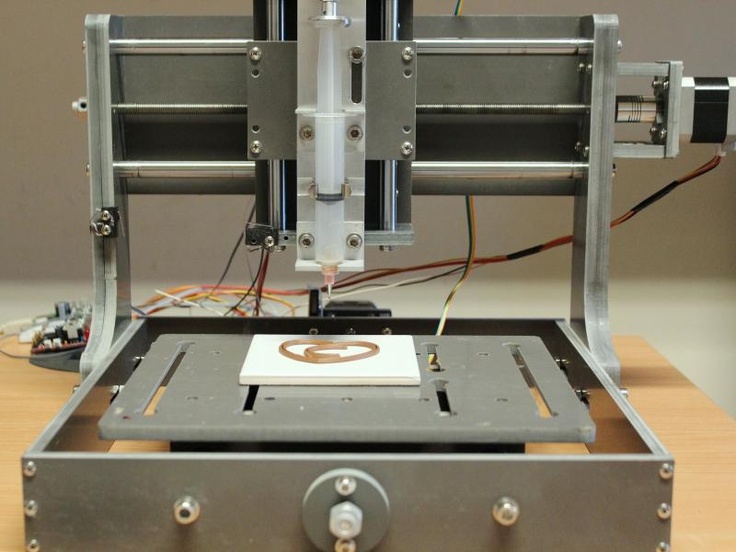 We also put a high value on ensuring that we meet this every time we enhance or develop a 3D printer for beginners. There are several factors that you, the customer, will look out for when deciding to buy a 3D printer and it is our prerogative to ensure that your product requirements are met. Even after your purchase from our wide range of cheap 3D printers, we pride ourselves on delivering personal support post-purchase. We want your experience with us to be unforgettable. Whether you have a question, some advice or need help with dysfunctional 3D printer accessories, we are always quick and happy to help.
We also put a high value on ensuring that we meet this every time we enhance or develop a 3D printer for beginners. There are several factors that you, the customer, will look out for when deciding to buy a 3D printer and it is our prerogative to ensure that your product requirements are met. Even after your purchase from our wide range of cheap 3D printers, we pride ourselves on delivering personal support post-purchase. We want your experience with us to be unforgettable. Whether you have a question, some advice or need help with dysfunctional 3D printer accessories, we are always quick and happy to help.
Here are other services we offer:
- Exceptional on-time delivery whenever you need your product
- Self-development of products to maintain efficiency and innovation
- High-quality 24/7 customer support and experience
- Money-back guarantee
- Innovative and affordable 3D printer price.
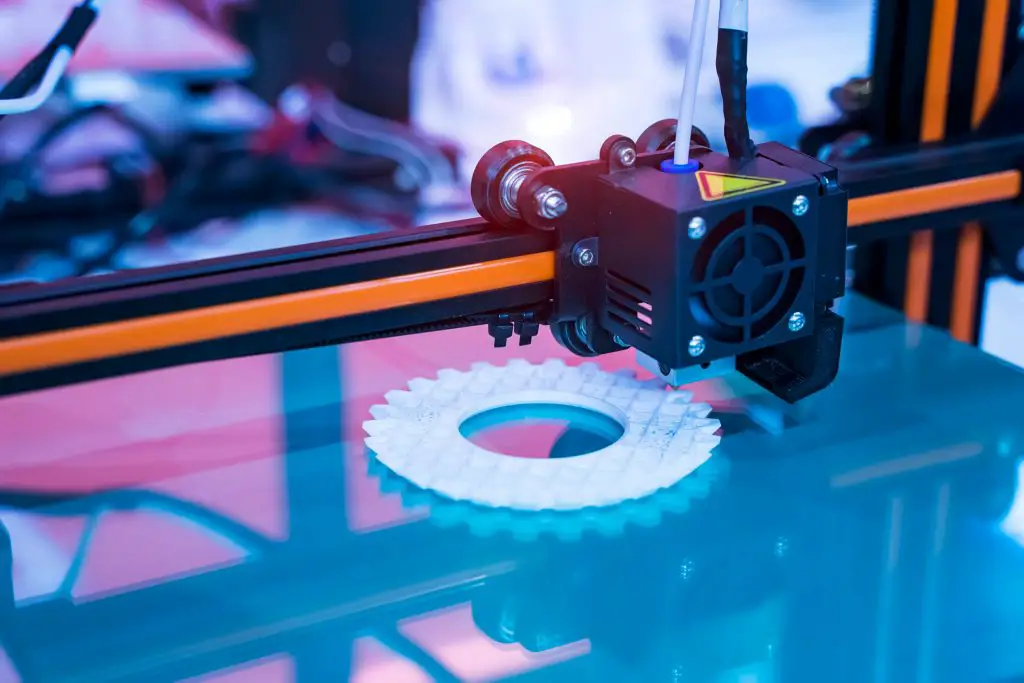
Our company makes sure that our customers get good value for money. This means efficient performance with high-quality results, all at a reasonable and affordable 3D printer cost. We never compromise on quality, but rather price to ensure that you get the best out of your chosen product. Our expertise in the market of 3D printers in the UK has allowed us to deliver accessible and affordable products that may operate differently, but all produce the same results. Customers usually look for specific characteristics, like performance, low price, and creativity.
On our website you can find some of the most productive yet affordable 3D printer prices. Some of the 3D printers UK are so simple that they are ideal to use for beginners and advanced users alike. They support multiple filaments like ABS, PLA, PVA and much more. There is even a nylon 3D printer. We have some work of art cheap 3D printer UK engineered to be reliable and deliver quality and high performance. We can accommodate even the most creative minds, offering products that deliver excellent results, support a variety of filaments, have innovative and responsive UI to control print settings. We even offer the best cheap printers that have an auto-levelling function, which enhances the printing experience by ensuring a smooth output and an immaculate result.
We even offer the best cheap printers that have an auto-levelling function, which enhances the printing experience by ensuring a smooth output and an immaculate result.
When buying a 3d printer, the quality and great performance are some of the top priorities. All of our products are highly reliable and have high-performance records. There are ones that are equipped with built-in settings to manage your printouts. Now you can modify the design of your model in the printout without having to test everything through printing and wasting materials. Plus the 3D printer UK has the quietest operation.
We are here to help, whatever your needs may be. We have a ready and willing technical support team, available 24 hours a day 7 days a week. With an outstanding team and an outstanding range of 3D printer UK, they will easily meet your commercial and creative needs. Whether you need help with choosing 3D printer parts UK or looking to buy a 3D printer UK that is both efficient and quiet, or maybe need a price that won’t bite, do not hesitate to contact us.
We understand that price is a significant factor, which is why the costs are set with your affordability needs in mind, offering a great selection of cheap 3D printers. All of our 3D printer kits are complete with assembly instructions, whilst some can be bought already assembled. Our products are developed with various solid materials including plastic, acrylic, and coated glass. We package our products with protective boxes to ensure there are no damages upon delivery. That’s how you get the best 3D printer price UK has to offer packed with a great machine.
We have built a reputation to be reliable and successful with our products and are ready to serve you with our exceptional product range.
There you have it, all the reasons why our website is your choice when it comes to quality 3D printers and pre and post-purchase customer service. Make sure you check out the wide range of the products offered on our website and surely you will not be disappointed.
Happy 3D printer hunting!
Desktop 3D printers for the home
Anet Anycubic Creality3D CreatBot Dremel Elegoo Felix FlashForge FLSUN Flying Bear Formlabs IBRIDGER imprinta MakerBot Peopoly Phrozen PICASO 3D QIDI Raise3D Tiertime Ultimaker Uniz Voxelab wanhao XYZPrinting ZENIT Zortrax
Availability
In stock
Manufacturer
Phrozen Raise3D Creality wanhao Flash Forge
PICASO 3D Anycubic Formlabs Tiertime Flyingbear QIDI Uniz CreatBot Dremel DigiLab Felix Zortrax XYZprinting Ultimaker imprinta Elegoo MakerBot Anet FLSUN IBRIDGER Peopoly snapmaker Voltera Voxelab ZENIT
Delivery
Assembled printer Assembly kit
Application
Architecture For large objects For beginners The medicine Education
Orthopedics Production prototyping Reverse engineering Advertising, exhibitions Sculpture Dentistry Hobby jewelry
Print technology
DLP/LCD/SLA FDM/FFF LFS
Thread diameter
1. 75 mm 2.85 mm 3.00 mm
75 mm 2.85 mm 3.00 mm
Material type
ABS PLA PETG Photopolymers Flex
Nylon (Nylon) ASA Carbon HIPS PC PEEK PP TPU other Metal (Ultrafuse 316L, Ultrafuse 17-4PH)
Number of extruders (print heads)
Heating table
Yes Not
Wi-Fi or other wireless network
Yes Not
Country of origin
China Russia USA Taiwan Hong Kong
Netherlands Poland
Add to compare
Product added to compare Go
| Manufacturer | Creality |
| Construction area size | 220x220x250 mm |
| Number of extruders (print heads) | 1 |
| Country of origin | China |
Add to compare
Product added to compare Go
| Manufacturer | Creality |
| Construction area size | 220x220x250 mm |
| Number of extruders (print heads) | 1 |
| Country of origin | China |
Add to compare
Product added to compare Go
| Manufacturer | Creality |
| Construction area size | 220x220x250 mm |
| Number of extruders (print heads) | 1 |
| Country of origin | China |
Add to compare
Product added to compare Go
| Manufacturer | Creality |
| Construction area size | 220x220x250 mm |
| Number of extruders (print heads) | 1 |
| Country of origin | China |
Free Shipping
Add to compare
Product added to compare Go
| Manufacturer | Creality |
| Construction area size | 200x200x200 mm |
| Number of extruders (print heads) | 1 |
| Country of origin | China |
Add to compare
Product added to compare Go
| Manufacturer | Voxelab |
| Construction area size | 200*200*200 mm |
| Number of extruders (print heads) | 1 |
| Country of origin | China |
Add to compare
Product added to compare Go
| Manufacturer | Flyingbear |
| On order/Transit | Goods in transit |
| Construction area size | 255x210x210 mm |
| Number of extruders (print heads) | 1 |
| Country of origin | China |
Free Shipping
Add to compare
Product added to compare Go
| Manufacturer | Anycubic |
| Construction area size | 102x57x165 mm |
| Country of origin | China |
Free Shipping
Add to compare
Product added to compare Go
| Manufacturer | Anycubic |
| Construction area size | 197 x 122 x 245 mm (5.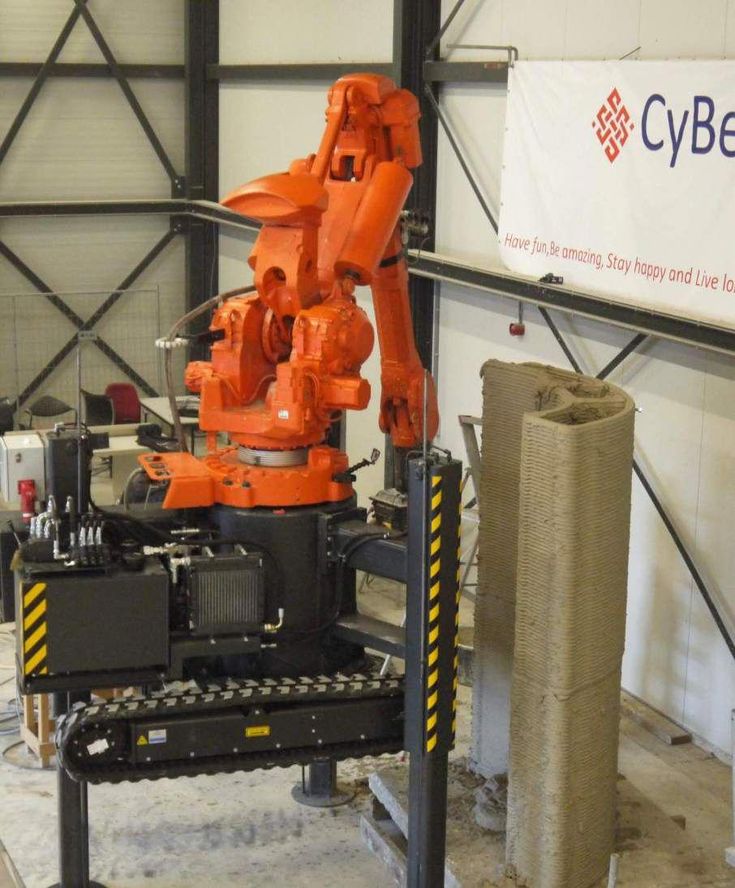 9 l) 9 l) |
| Chamber volume | 5.9 l |
| Country of origin | China |
| Manufacturer | Phrozen |
| Construction area size | 134x75x130 mm |
| Country of origin | Taiwan |
Free Shipping
Add to compare
Product added to compare Go
| Manufacturer | Creality |
| Country of origin | China |
Free Shipping
Add to compare
Product added to compare Go
| Manufacturer | Anycubic |
| Construction area size | 197 x 122 x 245 mm (print volume 5.9k) |
| Country of origin | China |
Free Shipping
Add to compare
Product added to compare Go
| Manufacturer | Creality |
| Construction area size | 200x170x∞ mm |
| Number of extruders (print heads) | 1 |
| Country of origin | China |
Free Shipping
Add to compare
Product added to compare Go
| Manufacturer | Phrozen |
| Construction area size | 165x72x180 mm |
| Country of origin | Taiwan |
Add to compare
Product added to compare Go
| Manufacturer | Flyingbear |
| Construction area size | 325*325*350 mm |
| Number of extruders (print heads) | 1 |
| Country of origin | China |
| Manufacturer | Phrozen |
| Construction area size | 200x125x220 mm |
| Country of origin | Taiwan |
3D printing is one of the most promising areas of technological development in the 21st century. Having gone a long way from bulky and heavy boxes to compact desktop devices, 3D printers have ceased to be something inaccessible to a wide range of users. The era of mass additive manufacturing has already arrived, and every home can now house a real desktop factory.
Having gone a long way from bulky and heavy boxes to compact desktop devices, 3D printers have ceased to be something inaccessible to a wide range of users. The era of mass additive manufacturing has already arrived, and every home can now house a real desktop factory.
You can buy a 3D printer capable of printing small models and prototyping of medium complexity today at the price of an entry-level laptop. The price of PLA or ABS plastic, which acts as a consumable, also no longer seems exorbitant. In a word, if you have long dreamed of getting to know the world of 3D printing and joining the ranks of makers, the right moment has come!
To save you time and make it easier to select equipment, we have collected in one section all desktop 3D printers optimized for home and office use. These are the real "workhorses" with the perfect balance of functionality, quality and price. Even a beginner can understand the settings, mount and calibrate a 3D printer, and as he gains experience, he will be able to print more and more complex three-dimensional models.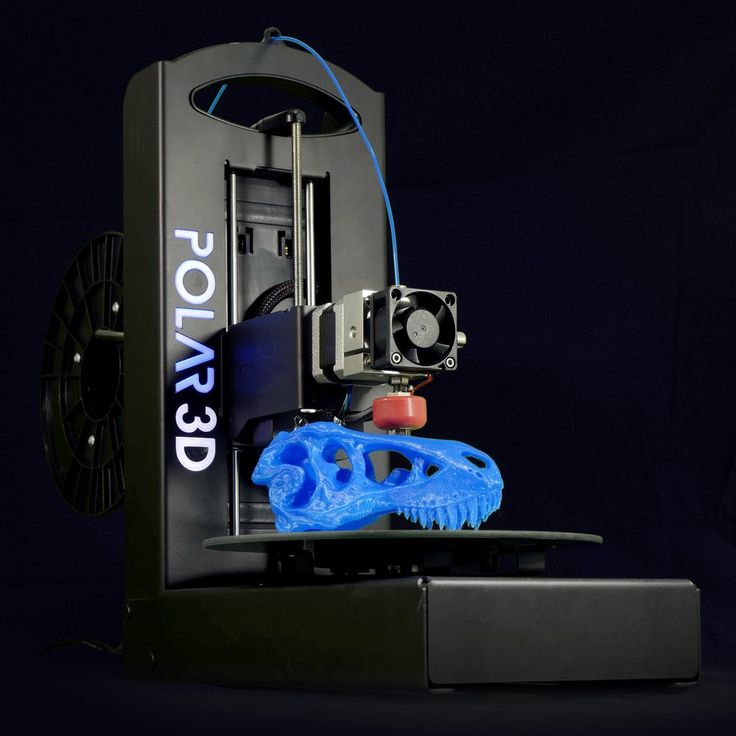
How 3D printing is changing the world / Sudo Null IT News
A new era of technological revolution According to the CONTEXT research group, the 500,000th 3D printer was shipped in 2015, and by 2017, about a million devices had been sold. 3D printing is already being introduced as a manufacturing technology. For example, in 2016,
General Electric began selling aircraft engines with 3D printed fuel injectors. Atlas-5 rockets with parts printed with the same technology were launched into space. Brands Under Armor and New Balance launched small runs of partially 3D-printed athletic shoes, and Organovo launched commercial bioprinting of human kidney tissue. So far, this is just the foundation. Throughout the history of mankind, there have been many technological revolutions, each of which went through three phases. The first is "conceptualization" , when visions and ideas are formed that determine the future path.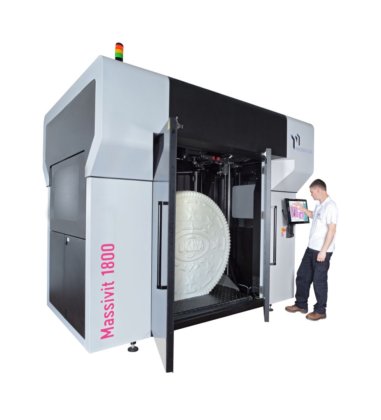 Then "realization" , during which previously seemingly impossible plans begin to be partially realized. And the third phase - "mass commercialization" when enterprises master the production and application of new technology.
Then "realization" , during which previously seemingly impossible plans begin to be partially realized. And the third phase - "mass commercialization" when enterprises master the production and application of new technology.
And what phase is 3D printing in? The use of a 3D printer to turn a digital file into a physical object is already widespread. For example, in such areas as engineering, law, economics, business, geography and art. There is already debate about the implications of exchanging digital objects over the Internet to print them out immediately on a printer (let's say a firearm). Clearly, we are far from the day when personal 3D printers put an end to capitalism by placing production in the hands of the majority. However, there is no doubt that the 3D printing revolution has reached its second phase, implementation.
By this time, enough methods have been invented to make solid objects by printing them in many thin successive layers. In fact, the most common 3D printing technologies have been around for decades.
In fact, the most common 3D printing technologies have been around for decades.
Although the technology continues to evolve, I will assume that the last revolutionary phase - mass commercialization - is about ten years away. The pioneers of 3D printing are already using it to make a wide variety of things. However, this market is still niche and limited in commercial applications. In particular, these are companies that are engaged in small-scale, piece production or goods that cannot be manufactured using traditional methods.
Notwithstanding the above, we must remember that ten years ago, no industry sector reported selling products entirely or partially made with a 3D printer. So what is happening now is impressive. As 3D printing techniques evolve and new ones emerge, and old processes become faster and cheaper, we can expect 3D printing to move closer to a mass commercialization phase in the late 2020s or early 2030s. Innovators in the field plan to take advantage of the technology long before that.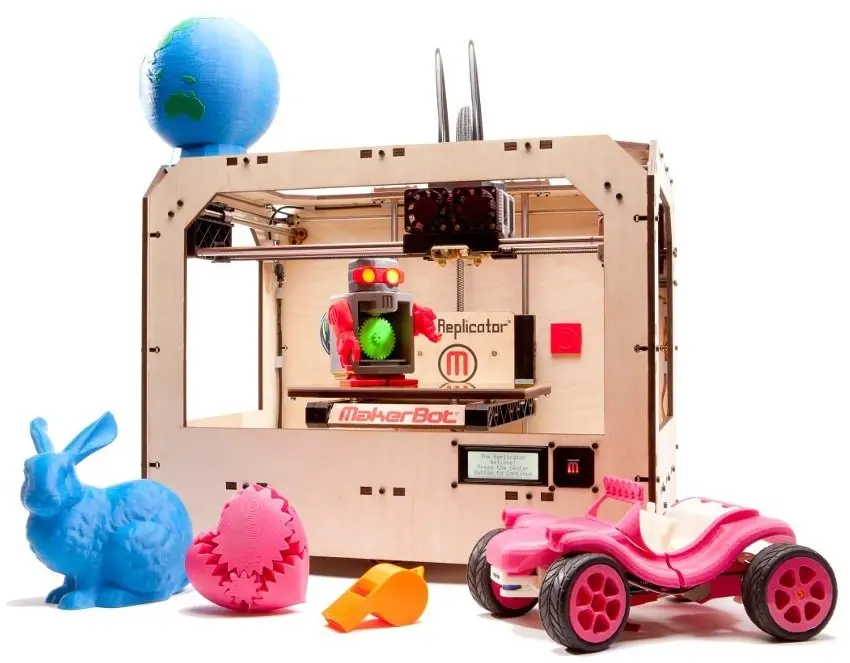
3D printing technology
How does 3D printing work? To a large extent, it is an evolution of 2D printing, already used ubiquitously in offices and homes.
Most of us are familiar with inkjet or laser printers that allow you to print documents or photos. They create them by controlling the application of ink or toner to the surface of a sheet of paper. Similarly, 3D printers produce objects by controlling the placement and adhesion of successive layers of "building material" in 3D space. For this reason, 3D printing is also known as Additive Layer Manufacturing (ALM) or "additive manufacturing" ( AP or AM - Additive Manufacturing).
To print an object on this printer, you need a digital model on your computer. It can be created using a computer-aided design (CAD) application or other 3D modeling software. Also, a digital model can be captured by scanning a real object with a 3D scanner and processing with CAD or other programs.
The model must then be run through yet another "slicing" program that will cut the digital object into multiple cross-sectional layers - typically about 0.1mm thick. These digital ribbons are sent to a 3D printer, which makes them one on top of the other until a real object is formed.
3D model in CURA-a popular open source program
The same model prints the table 3D printer Ultimaker
Ready-made toy
draws an object one layer at a time, depending on the technology it's built on. There are many 3D printing methods and they can be divided into 4 categories.
- The first category includes printers that create objects by extruding molten semi-liquid material from a print head nozzle. Most often it is thermoplastic that quickly hardens when it leaves the print head. Other extrusion-based 3D printers produce objects by extruding molten metal or chocolate icing (for printing culinary creations).
 There are also printers that use concrete, ceramic paste or clay.
There are also printers that use concrete, ceramic paste or clay. - The second category of 3D printers creates layers of objects by selectively solidifying a liquid resin, known as "photopolymer" , which cures when exposed to a laser or other light source. Some of these machines create layers of objects inside a reservoir of liquid. Others release a layer of resin from the print head and use UV light to cure it before applying the next layer. There are devices that mix several different photopolymers in one print job, which allows them to output color objects made from several materials. In particular, one of these printers is J750 by Stratasys - offers a palette of 360 thousand shades and can make objects from a mixture of different materials.
- The third and most common category of equipment is layering by selectively bonding very fine powder granules. This "granular bonding" is achieved by applying adhesive to powder layers or by melting the granules with a laser or other heat source.
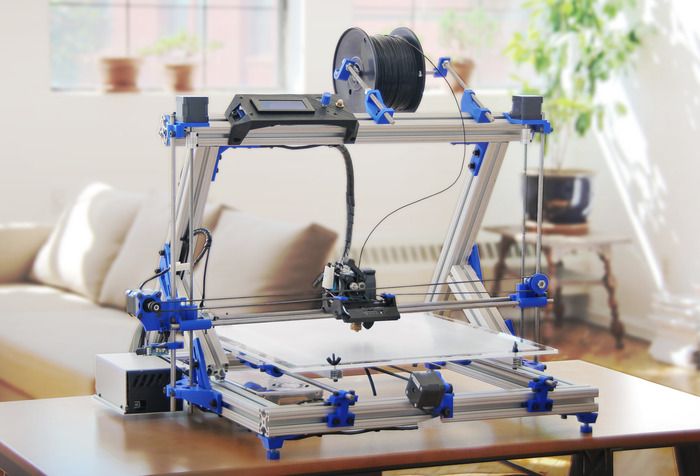 There are many types of powder adhesion based on various materials. These include nylon, wax, bronze, stainless steel, cobalt chromium and titanium.
There are many types of powder adhesion based on various materials. These include nylon, wax, bronze, stainless steel, cobalt chromium and titanium. - The latest category of 3D printer is built on lamination . Successive layers of cut paper, metal, or plastic are glued together to form a solid object. If sheets of paper are used as a building material, they are cut with a blade or laser, then glued together. They can be sprayed with ink during the printing process to create inexpensive, full-color 3D objects.
Market and application
3D printing is used for prototyping, mold making, digital direct manufacturing and custom manufacturing. Suppliers of 3D printing hardware, software and materials are already serving the needs of various market sectors. And now we will look at these areas of application to understand how 3D printing technology is developing.
Rapid Prototyping
Most often, 3D printers are used for rapid prototyping (RP - Rapid Prototyping).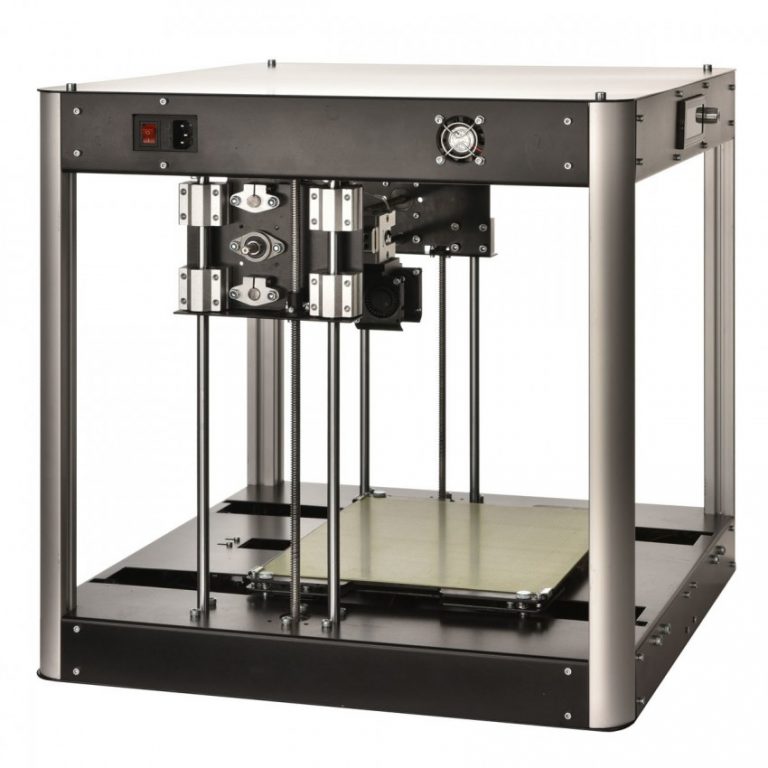 This includes concepts and functional prototypes. Concepts are simple, non-functional "drafts" of product design (such as a bottle without a removable cap) and are intended to allow artists to recreate their ideas in a physical format. Functional prototypes, on the other hand, are more complex and allow you to evaluate the form, fit, and function of each part of a product before putting it into production.
This includes concepts and functional prototypes. Concepts are simple, non-functional "drafts" of product design (such as a bottle without a removable cap) and are intended to allow artists to recreate their ideas in a physical format. Functional prototypes, on the other hand, are more complex and allow you to evaluate the form, fit, and function of each part of a product before putting it into production.
Functional prototypes and concepts were created before the advent of 3D printers using laborious methods and tools. Therefore, their production often takes many days, weeks or even months, and the cost is thousands or tens of thousands of dollars. 3D printers can create concepts and functional prototypes in days or even hours, and at a fraction of the cost of traditional fabrication methods. Examples from this industry include concept cars for Formula 1.
In addition to saving time and money, printing prototypes allows improved products to be brought to market as designs typically go through many iterations.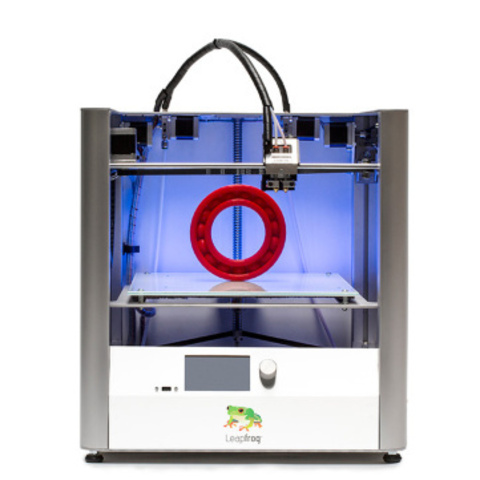 For example, Thermos thermos maker uses Stratasys 3D printers to produce prototypes in hours, not days, at a fifth of the cost of production from an external supplier. Because designers can now “create as many prototypes as needed,” the company has been able to fine-tune product features such as lid retention and ease of pouring.
For example, Thermos thermos maker uses Stratasys 3D printers to produce prototypes in hours, not days, at a fifth of the cost of production from an external supplier. Because designers can now “create as many prototypes as needed,” the company has been able to fine-tune product features such as lid retention and ease of pouring.
3D printing technology in color in various materials and metals continues to evolve, so the range and quality of products, including their components that can be quickly prototyped, continues to increase. So the company Nano Dimension demonstrated a desktop 3D printer - DragonFly 2020 , which can produce functional PCB prototypes. This equipment uses inkjet technology to output highly conductive "nano-ink" and can produce multi-layer boards, including all connections between layers. At a time when many companies wait days or weeks to get a prototype board from an outside vendor, the machine will print it in a matter of hours.
Molds and other manufacturing tools
In addition to prototypes, 3D printers are used to make molds and other fixtures for manufacturing equipment. A mold is needed in order to cast metals or plastics in it. Like prototypes, molds have traditionally been made by hand. Therefore, the use of 3D printers can save time and money for large manufacturers. For example, using Stratasys' Fortus printers, Lyon, France-based automotive giant Volvo Trucks reduced the time it takes to manufacture some engine components from 36 days to 2.
In August 2016, the American Oak Ridge National Laboratory 3D printed a 5.34 x 1.34 x 0.46 m trimming and drilling tool for Boeing. It is used in the construction of passenger aircraft, and was printed from carbon fiber reinforced plastic in about 30 hours. Previously, the production of such a part would take three months. As Boeing's Leo Christodoulou explained, “Additive manufacturing tools like the wing trim tool will save energy, time, labor and manufacturing costs. They are also part of our strategy to apply 3D printing technology to manufacturing areas.”
They are also part of our strategy to apply 3D printing technology to manufacturing areas.”
Another promising application is the production of molds used for casting metals. 3D printers are capable of producing the required shapes, as well as any additional rods needed to be placed inside them. The process is carried out by applying thin layers of foundry sand, which are held together with a binder. The resulting 3D printed mold is sent to the foundry, where molten metal is poured into it to produce the finished product.
ExOne is one of the companies specializing in the production of 3D printers for additive manufacturing using foundry sand. By 3D printing molds and foundry sand cores, manufacturers can not only save time and reduce costs, but also improve accuracy and mold more complex parts, the company says. This is because 3D-printed shapes and rods do not require post-processing, which could damage them.
Core molded from ExOne 3D printer
3D printers can also be used to make molds for injection molding plastic parts.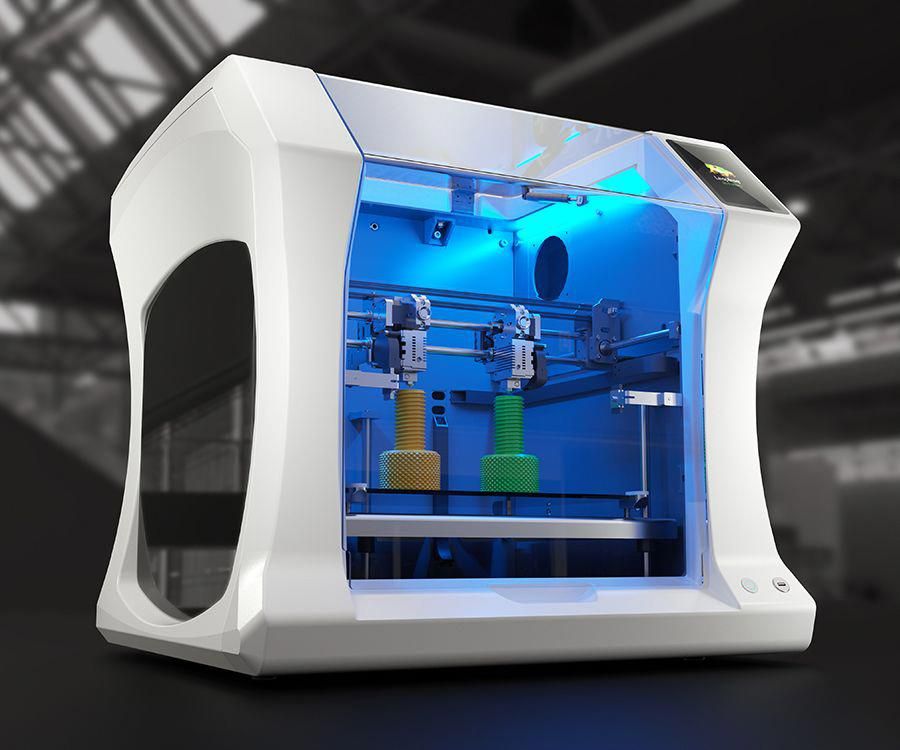 Such molds typically cost tens of thousands of dollars and are traditionally made of aluminum. Technically, a 3D printer can already make aluminum die casting molds using metal powder. But nowadays printers make such molds from resin using photopolymerization. Plastic molds are not as durable as their aluminum counterparts. But they are cheaper, faster to produce, and can be used to make up to 200 plastic parts before replacement is needed.
Such molds typically cost tens of thousands of dollars and are traditionally made of aluminum. Technically, a 3D printer can already make aluminum die casting molds using metal powder. But nowadays printers make such molds from resin using photopolymerization. Plastic molds are not as durable as their aluminum counterparts. But they are cheaper, faster to produce, and can be used to make up to 200 plastic parts before replacement is needed.
Bi-Link , based in Bloomingdale, Illinois, 3D prints low-volume injection molds. It manufactures parts for electronics and medical device manufacturers around the world. The ProJet 3500 HD Max printer from 3D Systems creates a form in hours instead of weeks. As Director of Research and Development Frank Sieberna said: “Customers are delighted with this service. Previously, you had to wait two or three weeks to get just the tools - not to mention the test parts. The ProJet 3500 HD Max can produce four different designs for a single customer in six days, shipping 10-12 parts per iteration overnight.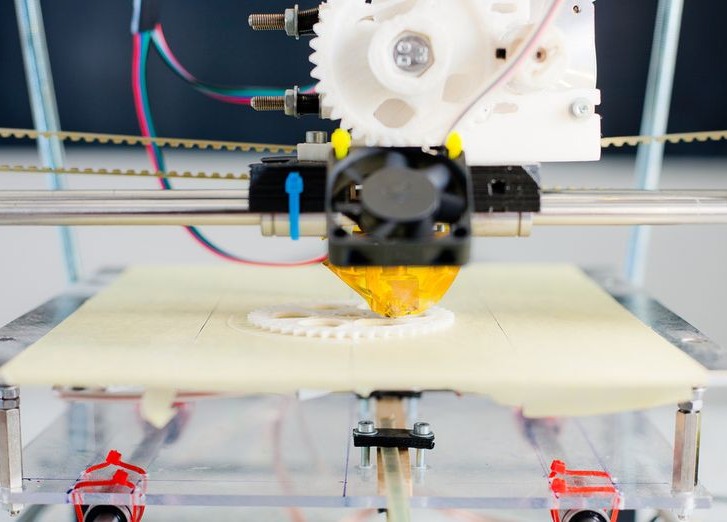 ”
”
Some companies are building machines that can print objects from wax (or wax substitutes) to create investment casting molds. The wax object is 3D printed, then molded around it using a material such as plaster. After the form is heated, as a result of which the wax “burns out” and flows down. Molten metal or other liquid material is then poured into the mold to create the finished product. The use of 3D printers to create wax models is quite common in the jewelry industry and other industries that specialize in complex and expensive items. Like injection molds, wax samples are consumable because the process of creating the finished product causes them to break.
Digital Direct Manufacturing
In several niche markets, 3D printers are already being used to produce finished industrial components and even consumer products. This development is referred to as "Direct Digital Manufacturing" (DDM - Direct Digital Manufacturing) and is becoming increasingly popular, for example, in aviation. Airbus and Boeing are installing tens of thousands of 3D printed components for their aircraft.
Airbus and Boeing are installing tens of thousands of 3D printed components for their aircraft.
Other DDM industries include automotive, medical, jewelry, and footwear. One of the leading pioneers is Nike. According to COO Eric Sprank, the company "has made a number of breakthroughs in design and manufacturing through 3D printing that will enable the creation of an entirely new custom shoe cushioning system." To this end, Nike is building an "Advanced Product Creation Center" covering approximately 11,000 square meters to house 3D printing and other design and manufacturing technologies.
It is quite possible that in the future everything will be made using a 3D printer, including even human organs. This is most noticeable in dentistry: wax models, orthodontic applications, fittings, surgical guides and veneer models are now 3D printed.
In addition to creating inorganic prostheses, there are "bioprinters" that build up human tissue by laying down layers of living cells. Such technology could revolutionize the medical field, for example by cutting the queues in organ donation. Company Bioprinting pioneer Organovo already sells printed liver and kidney tissue for use in drug testing.
Such technology could revolutionize the medical field, for example by cutting the queues in organ donation. Company Bioprinting pioneer Organovo already sells printed liver and kidney tissue for use in drug testing.
In addition to bioprinting tissues outside the body, bioprinting on the body or inside a wound is already under development. It involves printing layers of cultured cells directly onto the wound or even inside using keyhole surgery techniques. When such technology becomes advanced enough, the patient simply needs to insert an instrument into the wound, which will remove the damaged cells and replace them with new ones. These instruments will even be able to heal the wound caused by their introduction.
Individual production
In parallel with the growth of industrial 3D printing, there is an increase in individual production. These are all situations when an entrepreneur prints his own things on a 3D printer, bypassing the launch of production at a remote factory.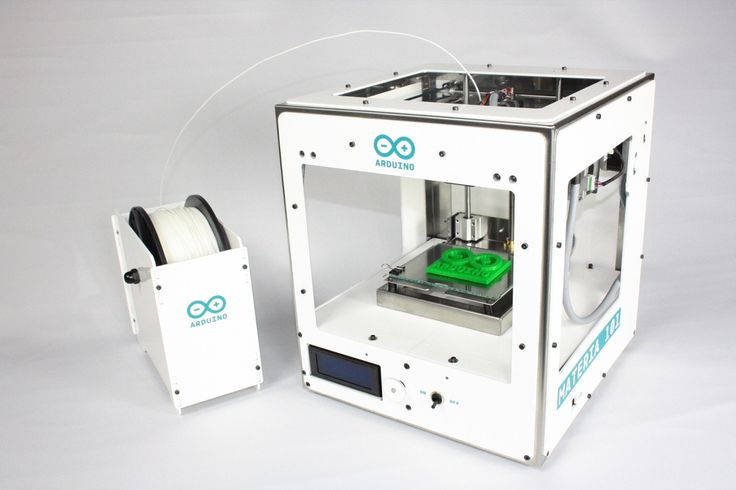 There are already several hundred professional 3D printers on the market starting at $230.
There are already several hundred professional 3D printers on the market starting at $230.
In addition to the growing number of personal machines, there is a growing number of free and paid 3D models that can be downloaded for printing. On resource Thingiverse hosts over a million free models - some of them can be customized to the user's requirements. It is possible that the provision of such content will become the foundation for mass personal production, as it will eliminate the need for creative and engineering skills.
Currently, personal and professional 3D printers are limited in their ability to use thermoplastics or composites, as well as photopolymer resins. Therefore, the range and quality of products that can be manufactured on such equipment remain low. At the same time, an increasing number of cloud-based 3D printing services, such as Shapeways and i.materialise allow anyone to upload a 3D object to be printed on industrial equipment.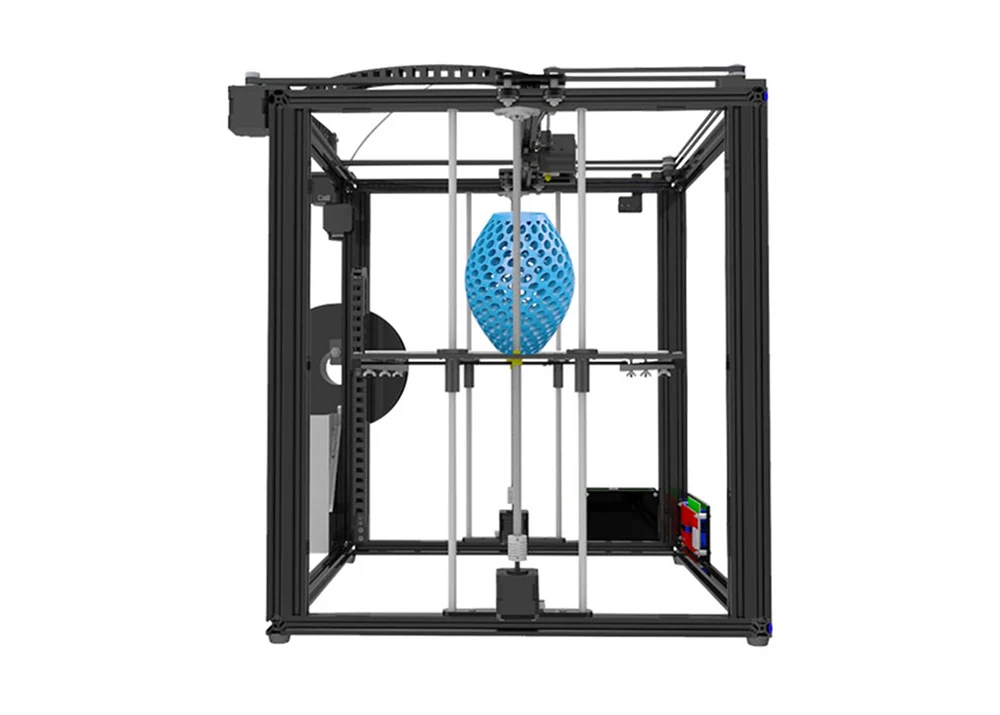 It is likely that access to such a service – rather than the sale of personal 3D printers – will be the driving force behind the DIY revolution over the next five to ten years.
It is likely that access to such a service – rather than the sale of personal 3D printers – will be the driving force behind the DIY revolution over the next five to ten years.
If the majority of people start making the products they need on their own, this will have a serious impact on many industries. Parts companies are already wary of the threat of mass-produced personal items. The representatives of the transport and logistics sectors are afraid of the same, because this will change the demand for their services.
In 2014, the IBM Institute for Business Value published a report highlighting four futures for custom manufacturing. And now we will briefly get acquainted with it.
- The two unknowns are the speed at which 3D printing technology will advance and the willingness of consumers to embrace custom production. If technology advances slowly and consumers don't embrace 3D printing at home, then we'll see "quiet revolution" with gradual changes.
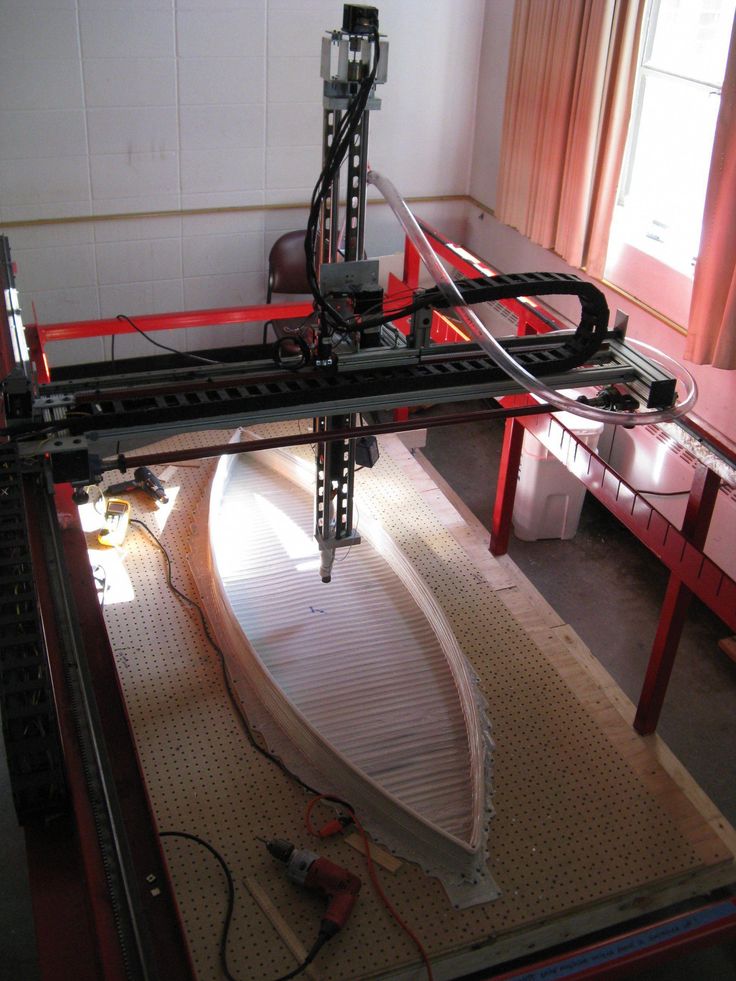
- There is also an alternative: technology is developing slowly, but consumers want to become producers - then we are waiting for "production revolution" , when more and more necessary things will be made by small entrepreneurs.
- Another option is that 3D printing technology will make a breakthrough, but consumers will leave it behind - then such printing will become the main technology in industrial production, and will not have a big impact on the consumer market.
- And the last turn of events: 3D printing is developing rapidly, and consumers are actively using it, then we will witness "rethinking consumption" . This means merchants large and small offering 3D printed products at your request. There will also be a lot of people "printing" in their homes, garages, kitchens or offices and hangars.
I assume that consumer involvement in 3D printing will grow along with the improvement of technology, but at a slow pace. This means that over the next few decades, we will gradually move from a “quiet revolution” to a “manufacturing revolution” and then to a “consumer rethinking”.
This means that over the next few decades, we will gradually move from a “quiet revolution” to a “manufacturing revolution” and then to a “consumer rethinking”.
The development of the 3D printing industry
There are different segments of the 3D printing market, and they are at different stages of development. The very first 3D printers began to make prototypes in the late 1980s, and the use of printing to create molds did not begin until a few years after that. Long before the early 2000s, the first finished products and works of art printed using this technology appeared. Finally, customization only became possible in 2007 with the introduction of the first "open source" 3D printers that private individuals could afford.
I estimate that half of all prototypes will be 3D printed by 2025. However, 3D printing is not the only rapid prototyping technology. There are cases where traditional methods are better suited for prototyping. It is inconceivable that inventors would stop sculpting things out of clay, wood, paper, metal, and everything else that is available in their kitchens, studios, labs, workshops, and sheds.
In terms of 3D printing of molds and manufacturing tools, this market currently lags behind rapid prototyping, but will very soon become the mainstay of additive manufacturing. I assume that it will take at least a decade to saturate it. After talking with manufacturers of industrial 3D printers, I was convinced of this. In most industries, 3D printing of molds and other tools represents the biggest market opportunity.
In digital direct manufacturing, this is just starting to happen, although it is currently a very niche activity. However, in the next ten years or so, many industries, primarily aerospace, automotive, healthcare, fashion, footwear and designer goods, will use 3D printing as one of their core manufacturing technologies. This will allow you to create completely new types of products and attract media attention. And even so, in 10 or 20 years, the vast majority of objects in our lives will still be produced by traditional methods.
Likewise, for decades to come personal items will be a niche market in both the 3D printing industry and global manufacturing. Currently, no more than 10% of the 3D printing industry's revenue comes from the sale of personal printers. Many of these machines are sold to companies rather than individuals. But this does not mean that the sale of personal equipment for home use does not represent a market opportunity.
Currently, no more than 10% of the 3D printing industry's revenue comes from the sale of personal printers. Many of these machines are sold to companies rather than individuals. But this does not mean that the sale of personal equipment for home use does not represent a market opportunity.
It can be argued that home production will not be the driving force behind the 3D printing revolution - and many in the industry agree. However, I will look forward to 3D printers in 9$9 that will be able to make small plastic items based on a model sent from a tablet or smartphone.
Making new products in new ways
Like the Internet revolution that preceded it, 3D printing is enabling companies and individuals to achieve the previously impossible. And the reason is not only in the creation of prototypes and old things in new ways. It does so in line with new business models. Let's outline these key benefits.
Single and small batch production
With traditional methods, single and small batch production is expensive and often prohibitive.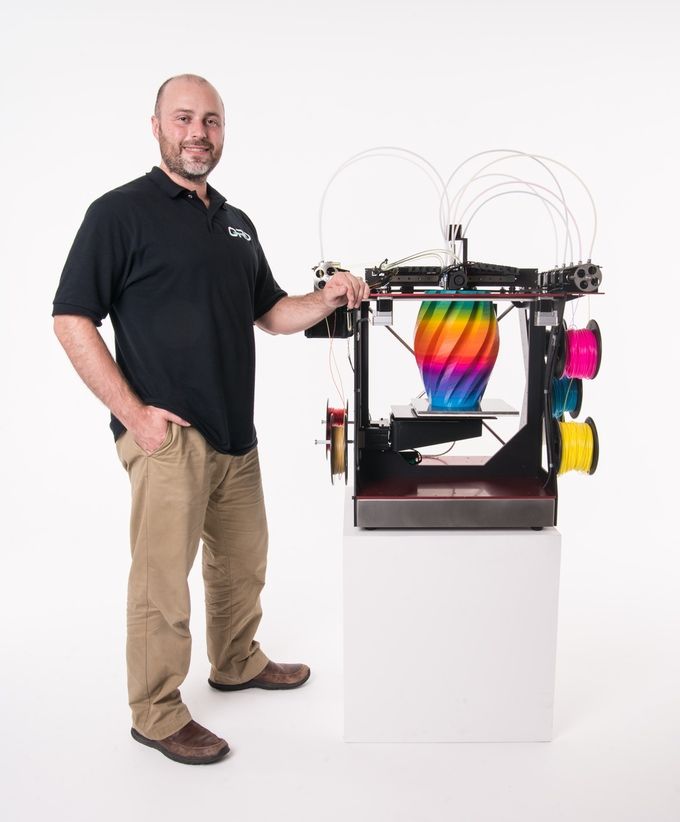 When things are printed on a printer, there is practically no difference in cost per unit - that is, it does not matter if 1, 100 or 1000 copies are required, since there are no costs for tools and workers. Therefore, in many situations where a few hundred or fewer components are needed, 3D printing will be the most economical way. It is for this reason that 3D printing is so widely used in rapid prototyping and is increasingly used in the production of molds and other tools.
When things are printed on a printer, there is practically no difference in cost per unit - that is, it does not matter if 1, 100 or 1000 copies are required, since there are no costs for tools and workers. Therefore, in many situations where a few hundred or fewer components are needed, 3D printing will be the most economical way. It is for this reason that 3D printing is so widely used in rapid prototyping and is increasingly used in the production of molds and other tools.
Jay Leno, who enjoys collecting cars, is already using 3D printing for one-off production. As an example, when a rare EcoJet concept car needed to have some broken air vents replaced, it contacted 3D Systems . The company scanned the broken parts, digitally repaired them using a CAD program, and sent the resulting data to service provider Quickparts . There, the new vents were 3D printed from a lightweight, fiber-filled nylon material called DuraForm HST. The result is a reliable replacement part with a better strength-to-weight ratio than the original.
3D printing is being used to make props for TV shows, movies and theatrical productions. With this technology, SpaceX is printing the engine chambers of the Crew Dragon spacecraft, and NASA has printed about 70 parts for the rover.
Customization and personalization
In addition to facilitating the small-scale production of identical items, 3D printing allows products to be customized according to the tastes of the buyer and his physical needs. For example, company Robot Bike Co. uses technology to build a custom R160 mountain bike frame. It is created from carbon fiber passing between titanium ridges, which are printed on Renishaw's 3D printers. On the Robotbike.co website, the buyer enters his height, leg size and arm span, which allows him to get a frame individually for him.
The R160 is a great example of a real product that combines 3D printed parts with other standard components. This makes it possible to offer a product according to individual requests in an economical way.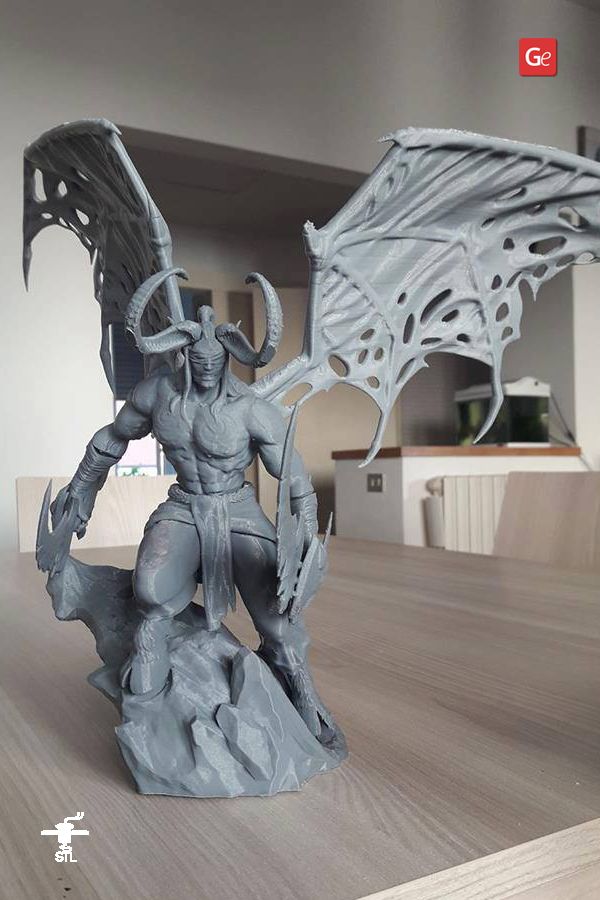 I am sure that over time, many companies will realize the potential of "custom-made" by 3D printing certain parts.
I am sure that over time, many companies will realize the potential of "custom-made" by 3D printing certain parts.
Design and build optimization
Another key benefit of 3D printing is that it removes the limitations of traditional manufacturing methods. While a designer can come up with any design for a product, if its components cannot be molded, machined, and assembled, the product will never hit the market. And in the “brave new world” of 3D printing, you can create things that were previously impossible to make. For example, such a printer can produce a chain or necklace made up of links that do not have breaks and therefore will never come apart.
The TransFIORmers motorcycle racing team used a Renishaw metal 3D printer to produce a new, optimized suspension design. The original version was handcrafted from steel, and at the same time, twelve parts were required for assembly, which must be welded together. But with the help of 3D printing, the team was able to combine the structure into a single titanium component that required no assembly, resulting in a 40% weight reduction, a critical feature for racing.
Using plastic or polymer materials, some printers can create working, pre-assembled, composite mechanisms such as a gearbox. Traditionally, the production of multi-component products includes a final assembly step. But when things are printed on a 3D printer, this is not necessary.
Free market access
In addition to improving the performance of products, 3D printing will allow many more people to become manufacturers. This is because the cost of prototypes and production tools will no longer be prohibitive, so 3D printing is making small-scale production increasingly viable. But more importantly, the availability of 3D printing services will allow almost any talented artist or designer to find a market for their creations.
Today it is very difficult for an individual or even a small company to bring a product to market, let alone globally. One of the few exceptions is book publishing, where an author can create and distribute a print-on-demand product.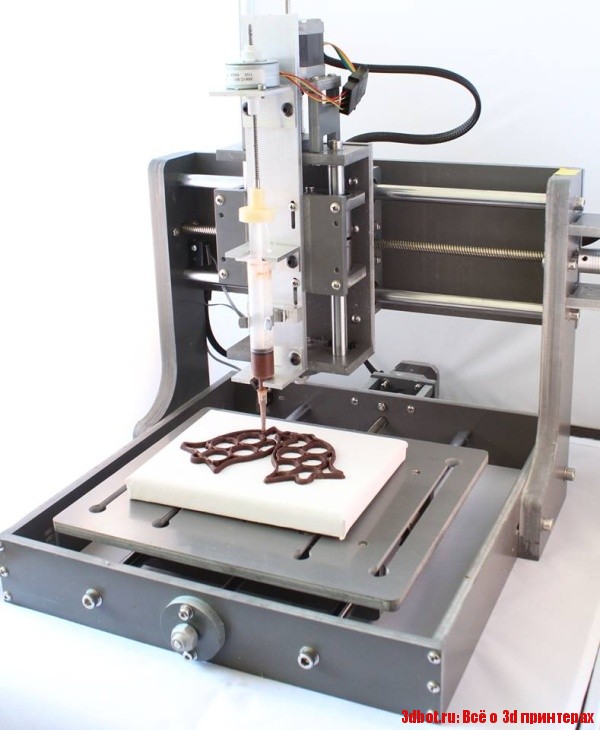 For example, residents of the UK can order a printed book through Amazon and receive a book printed in the corporation's warehouse within eight hours. This innovation allows authors to sell books without pre-printing and distribution.
For example, residents of the UK can order a printed book through Amazon and receive a book printed in the corporation's warehouse within eight hours. This innovation allows authors to sell books without pre-printing and distribution.
Similarly, 3D printing allows individual designers to bring products to market without investing in equipment and prefabricated copies. For example, more than 8 thousand designers have already opened online stores on the site of a 3D printing service provider - the company Shapeways . As an example, consider the store of the famous bot creator Kidmechano. His creation is Modibot, which is an ever-expanding line of 3D printed action figures with an articulated design. You can compare Modibot with Lego or Transformers.
Kidmechano uses the Shapeways platform to sell over 400 different ModiBot figures and accessories, including armor and weapons. Prices start at a few dollars, and when an order is placed, Shapeways prints whatever is required, sending the finished product to the customer, and Kidmechano his share of the proceeds.
Digital storage and transportation
In addition to enabling small-scale production, cost-effectiveness and democratization of market access, 3D printing will facilitate the storage and transportation of digital objects. This means that in the future there will be two options for sending a parcel. The first is to send the physical product by courier or mail, and the second is to transfer the digital file over the Internet for 3D printing on site by the recipient.
Many people regularly post texts, photos and videos on the Internet, and thanks to 3D printing, digital objects will soon be added to social networks. Thus, by making digital storage and transport possible, 3D printing will do to things what computers and the Internet have already done to store and transmit information.
In some industries, digital object storage is already starting to make a difference. For example, most dentists have traditionally had to store huge amounts of plaster casts taken from patients' mouths. Although they were only used once, there was no way to predict if they would be needed in the future, which led to archives with boxes and cabinets littered with plaster models. But now dentists are moving to digital technologies: 3D scanners and 3D printers are replacing alginate molds and plaster casting. This allows you to save impressions of the patient's oral cavity in digital form, for future 3D printing if necessary.
Although they were only used once, there was no way to predict if they would be needed in the future, which led to archives with boxes and cabinets littered with plaster models. But now dentists are moving to digital technologies: 3D scanners and 3D printers are replacing alginate molds and plaster casting. This allows you to save impressions of the patient's oral cavity in digital form, for future 3D printing if necessary.
Material savings and environmental impacts
In addition to the benefits mentioned above, 3D printing saves materials for manufacturers, which is especially important for sustainable development. Today, factories begin production with a block of metal or other raw material and then cut it: lathe it, file it, drill it, or otherwise, to form the final product. In contrast, 3D printing is an additive activity that takes as much material as the finished product. Therefore, we get significant savings in raw materials if we make things using this technology.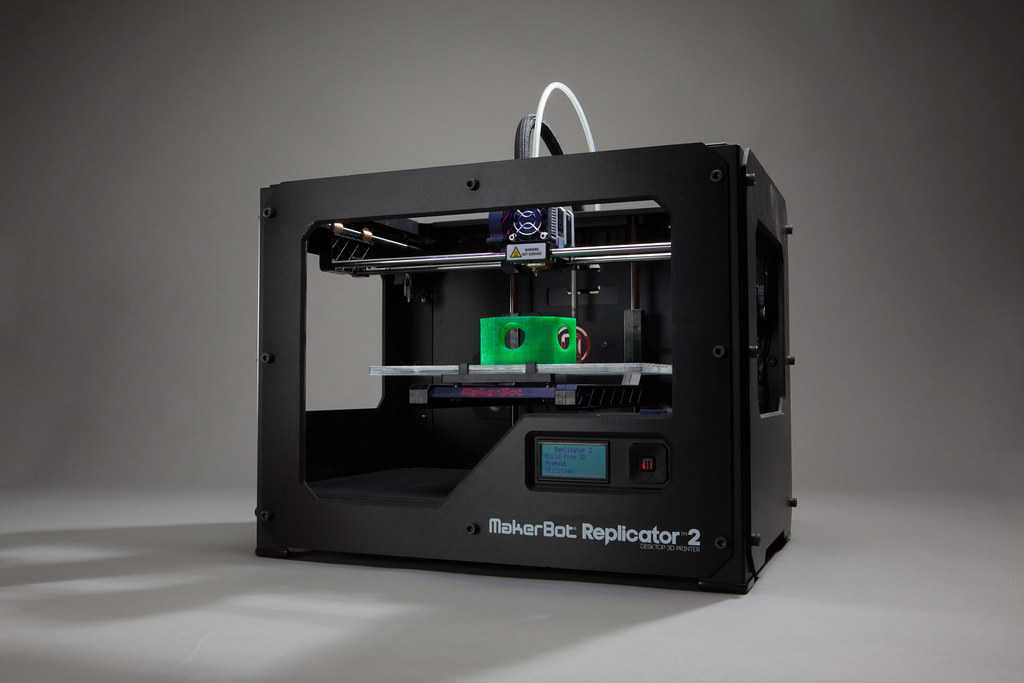
In addition, 3D printed products can have an internal structure optimized to use the minimum amount of materials. For example, plastic or metal parts printed on printers can be produced with internal cavities or an open grid - something that is almost impossible to achieve using most traditional technologies. Again, this results in material savings as well as lighter parts, which, for example, will reduce the fuel consumption of aircraft and other vehicles.
3D printing could be the cornerstone of the future transition to "Local Digital Manufacturing" (LDM - Local Digital Manufacturing). Today, most of the production is carried out in factories remote from their customers. As a result, huge amounts of oil and other resources are being spent on storage and transportation. Given declining natural resource stocks and climate action within a decade or two, these modes of transportation and storage may not be feasible or culturally appropriate. Thus, environmental protection may be a force to stimulate the mass adoption of 3D printing to facilitate the production of goods in local industries.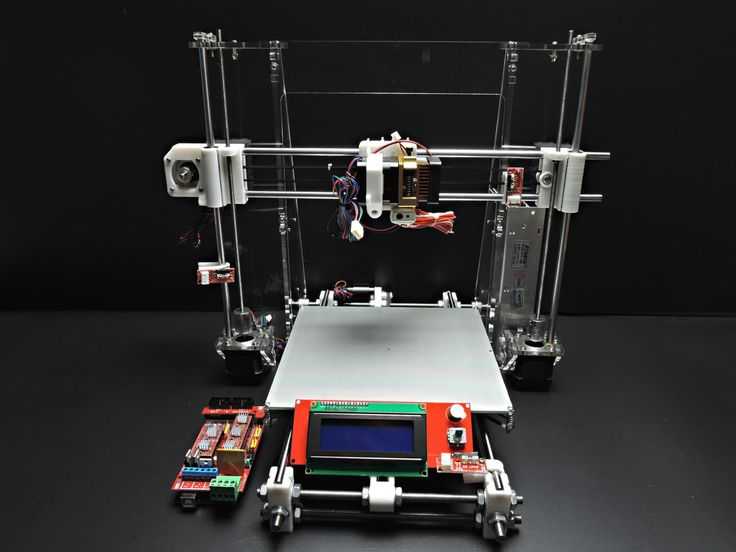
Difficulties can be overcome!
Like any new technology, 3D printing can have both negative and positive effects. For example, there are fears that its further development will reduce jobs. And this is quite possible for some professions. Especially for those who produce prototypes, molds and tools using traditional methods.
It is possible that employment in countries that prepare products for export will decline as the technology is absorbed by local industries. In his 2013 State of the Union address, President Obama cited 3D printing as a technology that "has the potential to revolutionize everything we do" and thereby bring jobs back from Asia back to the US. In other words, the global economic impact of the development of 3D printing has been recognized at the government level as one of the largest economies in the world.
Obviously, 3D printing will also help create new jobs. It will be a long time before we can 3D print finished products without the help of a skilled technician. As technology spreads, new jobs will emerge, and such employment will be evenly distributed across the region—not typical of the industrial revolutions of the past.
As technology spreads, new jobs will emerge, and such employment will be evenly distributed across the region—not typical of the industrial revolutions of the past.
Some industries could also benefit from the spread of 3D printing. Last but not least, the logistics sector is already aware of these opportunities. For example, in July 2014, in Publication 9U.S. Postal Service 0519 noted that the service provider could "benefit enormously" from the spread of 3D printing due to the expected increase in small package deliveries. In particular, it was predicted that the technology could lead to an increase in the income of the local parcel delivery service by 486 million dollars a year. The forecast was based on the assumption that most 3D printed goods will be made in local service bureaus, from where they will need to be delivered to people's homes.
In addition to the impact on employment, there are two other problems: infringement of intellectual property rights and the use of 3D printing for criminal purposes. It is already possible to use consumer equipment to scan an object, such as a model of Mickey Mouse, and then print a plastic copy of it. Similar to the impact that mp3 music and the internet have had on the music industry, 3D printing can impact intellectual property rights.
It is already possible to use consumer equipment to scan an object, such as a model of Mickey Mouse, and then print a plastic copy of it. Similar to the impact that mp3 music and the internet have had on the music industry, 3D printing can impact intellectual property rights.
Even more disturbing, it is already possible to 3D print firearms. Currently, a $230 personal 3D printer can only make a disposable plastic gun. But when the ability to print from metal becomes affordable, we will have serious problems.
The latest minefield with 3D printing and personal effects is health and safety. Today, almost all the products we buy meet certain standards and are tested. However, manufacturers are responsible for any accidents and injuries that may occur as a result of their failure or malfunction. But who will be responsible if, for example, a child downloads a free toy from the site, prints it out and gives it to the younger one - and he swallows a piece broken off from it and suffocates? Will the fault lie with the person who developed the object; the site through which it was published, the manufacturer of the 3D printer, the supplier of the consumables, or the parent that allowed it? Now there is no answer to this question. And pretty soon, we won't be able to ignore it.
And pretty soon, we won't be able to ignore it.
In a world of pioneers
The 3D printing revolution, like any other technological revolution, is the product of the action, energy and vision of those people who are brave enough to make it happen. Over the past few years, I have had the pleasure of interviewing many of the pioneers of 3D printing. And since my goal is to capture your imagination and not focus on details and technical details, so I asked them the fundamental question: “Why did you choose this particular technology?”.
One of the first people I spoke to was Anssi Mustonen , the head of Finnish 3D printing and design company AMD-TEC . According to Anssi, 3D printing can provide customers with a quality service:
“We live in a hectic world, but thanks to this technology, you can provide customers with quality services. As for prototypes: I don't have time to code and send orders to external vendors for details.3D printing is not the only way to fabricate, but it is faster at creating complex shapes and configurations than traditional methods.”
Konstantin Ivanov , co-founder and CEO of 3DPrintus.ru , told me how technology allows us to offer new types of products and services:
“3D printing provides solutions that are at the intersection of manufacturing and the digital technologies of the Internet. Our customers have discovered an easy way to create and produce just about anything. I'm sure the main advantage for them is the ability to use a simple interface to get their product."
Gary Miller , Managing Director of Print Services 3D Print Bureau in the UK, told a similar story, albeit with caution in the forecasts:
“We use 3D printing because it’s faster: faster lead times and almost any geometry is available! I started with the Objet printer over ten years ago when there was only one material.Years have passed, and now there are about 2 thousand materials for printing. Just imagine where we will be in ten years! True, no matter how much raw material you have, you need to transfer it to reliable hands. You need experience in your industry to understand where this technology is suitable, and where it will only increase the cost. I used to be skeptical that 3D printing would move into manufacturing, but in the first half of 2016 we saw progress and an increase in orders. It's great to see how 3D printing develops and new materials emerge."
One of the most interesting conversations was with John Cobb , EVP Corporate Affairs of 3D printing giant Stratasys in the US. Shortly after starting the conversation, John focused on the technology's potential to redesign and distribute products:
“In 3D printing, there is a lot of focus on adapting it to traditional manufacturing processes. The fundamentals of design are changing, allowing for a change in the way products are made and then methods of distribution.Imagine there is a problem with the plumbing. You take a picture of it with your smartphone and send it to the Home Depot And after an hour or two, you assemble the pipeline - replacing a non-standard part. It may take another five years, but we are already moving in this direction.”
Miranda Bastins , director of the Belgian 3D printing service i.materialise , focused on new market opportunities from a different perspective:
“3D printing helps to create a world where products meet our expectations or individual style, and where everyone has the opportunity to own something unique. Things not only better meet the needs and interests of consumers, but it also becomes possible to sell their own goods to others. For example, a jewelry designer might propose a new ring to a global audience and test the demand for the design. If there are no orders, this is no longer a problem (printing only on demand) - and if there are, then the rings will be printed, delivered to the customer, and the creator will receive his share of the proceeds.
Lucy Beard , founder of Feetz , also recognizes the potential of 3D printing to create "better fit" products. Feetz is a "digital shoemaker" that uses 3D printers to make custom shoes. As Lucy told me:
“This technology is changing the way we produce and consume things. We can make personalized products with fewer resources, and it will be much easier to recycle them.”
Mark Saunders is Director of the Global Solutions Centers at Renishaw , a 3D printer manufacturer. He also focused on the opportunities the technology offers manufacturers:
“More and more companies are looking to use the potential of 3D printing to improve product performance, making it more efficient and better adapted to the application. The unique ability to create complex geometries from high-quality materials opens up huge potential for innovation in both product design and business models.We expect additive manufacturing to play a key role in further developing processes and improving products.”
Finally, Sylvain Premont , founder of iMakr 3D printer shops and 3D content site My Mini Factory , commented on how technology unleashes the imagination:
we will be able to invent, design and manufacture almost everything - in the shortest possible time and at a low cost. You will also be able to download content that is ready to print and easily adaptable to your own needs. The next generation will ask their parents: How did you get along without a 3D printer before?
A new frontier
As you can see from the interview, 3D printing continues to generate interest among its pioneers. And many large manufacturers using traditional technologies are already changing direction towards this technology.
Nobody can predict the future of 3D printing. However, there is good reason to believe that the technology will have a drastic impact on many manufacturing sectors.




